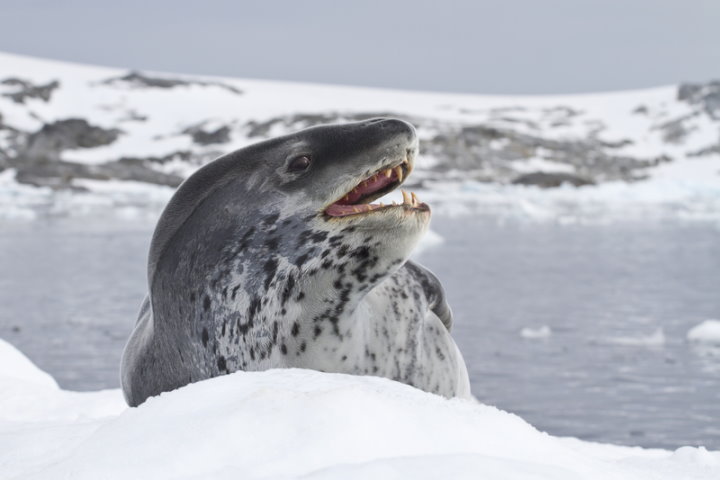
Icebergs against a dark sky
Antarctica may only be the fifth largest continent, but in many other ways it is ahead of the pack. It is the driest, coldest and windiest continent, and it also has the highest average elevation. It is the only continent with no permanent residents and it is home to 90% of the world’s ice and 70% of global fresh water reserves.
Although the idea of a Terra Australis Incognita (Undiscovered Southern Land) was first proposed by the Greco-Roman thinker Ptolemy as early as the first century AD, this land was assumed to be both much larger than it really is and connected to either South America or Australia. In 1773 Captain Cook crossed the Antarctic Circle, proving once and for all that any southern landmass would be a (smallish) continent in its own right.
Less than fifty years later the Russian sailor Fabian von Bellingshausen confirmed the existence of Antarctica when he sighted land, and only a year after that the American sealer John Davis was (supposedly) the first to make landfall. In the 1840s Sir James Clark Ross undertook the first significant exploration of the continent and to this day numerous Antarctic landmarks are named after him.

Expedition ship Discovery in Antarctica
But it was not until the early 1900s that Antarctica would really seize the headlines. In 1901 Britons Robert Scott and Ernest Shackleton attempted to reach the South Pole on the Discovery Expedition. This first sortie served mainly to show them how little they knew about Antarctic exploration, and the fact that they were able to reach 82°S had far more to do with their guts and endurance than it had to do with their preparation or expertise. In 1909 Shackleton tried again on the Nimrod Expedition and he and three companions got as far as 88°S – only 112 miles from the pole and far further South than anyone else had ever gotten.
Shackleton’s expedition had proved that reaching the South Pole was within humans’ reach and a ‘Race to the pole’ between Scott and the Norwegian explorer Roald Amundsen commenced. Amundsen was a veteran in Arctic conditions who had skied since childhood and had spent years with the Inuits learning how to handle dogs and dogsleds. He planned meticulously for his assault on the pole, and only told Scott of his intentions once he had already sailed from Europe.

Amundsen Expedition at the South Pole in 1911
Scott wasn’t altogether unprepared (he was in Australia readying his own mission when he received the infamous telegram), but he did have to set off for Antarctica a bit sooner than he would have liked. He chose a different route to Amundsen (slightly longer, but on charted territory) and although his expedition did initially rely on dogs and skis these were soon abandoned in favour of good old-fashioned, but far less effective, manpower.
Scott and Amundsen’s experiences could not have been more different. Amundsen and his men waltzed their way to the South Pole. They arrived on 14 December 1911, spent three days taking in the sights and left a green tent and a letter for Scott. All the men (but only 11 of the 97 dogs) returned safely to their base just over a month later. For an adventure that was supposed to be the ultimate test of human endurance it was almost too easy.

Scott’s Party at the South Pole
Scott and four of his men did eventually make it to the pole 35 days after Amundsen. By the time they got there, their supplies were dwindling and their bodies and minds were weak. One by one they perished on the return journey – their bodies (and the letter from Amundsen) were only found the following year.
Since those heady days Antarctic exploration has never been so much in the global consciousness although the first solo expedition to the pole and the first baby born on the continent did both cause ripples. If you think that the White Continent has been tamed, though, you’ve got another thing coming: no-one has even come near to exploring the landmass which lies beneath the ice-caps, and this may well be the next great frontier for modern-day explorers. Satellite imagery has shown that the world’s second biggest lake is in Antarctica, but surely the land beneath the ice will reveal countless other surprises…
Recommended Tours
Don't Forget to Share This Post!

Alan R. Cohen is the Co-Founder of South American Vacations and a frequent contributor to the blog.







